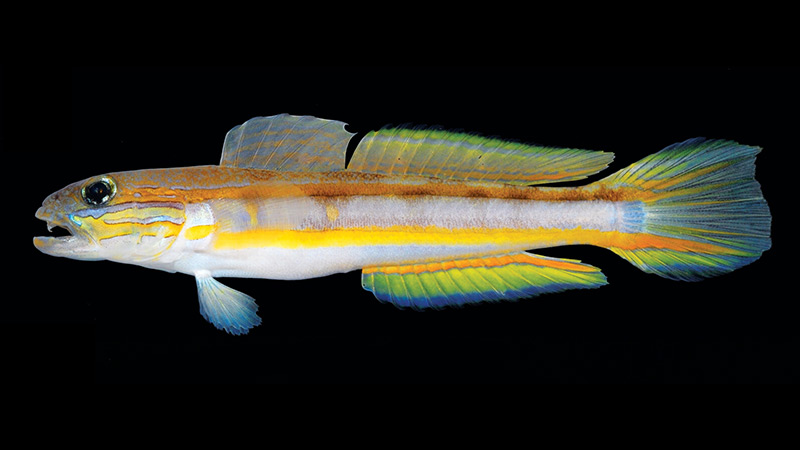Valenciennea yanoi is a yet another new species of sleeper goby from Japan that is definitely going to turn some heads. Sure we get tons of new species of gobies every year, but sleeper gobies are a little more special, being large showy bottom dwelling fish which make excellent aquarium fish.
The new sleeper goby species, Valenciennea yanoi, has been known for a long time as Valenciennea sp. 1 “sensu”. The official description of Yanoi’s sleeper goby brings the total number of sleeper gobies to 16, with a whopping 10 species to be found in Japan alone. Although, we know of at least one more sleeper goby from Mauritius that also awaits taxonomic analysis.

Interestingly, and fortunately for divers and aquarists, unlike so many of the new species that have been described, especially from Japan, is that this species lives at rather shallow depths. The type specimens for the description of Valenciennea yanoi were collected at a mere 13 to 20 meters deep, you could practically free dive that deep without too much training.
The newly described Valenciennea yanoi is similar to two other small species of sleeper gobies, all of which share a low rounded dorsal fin, bluish body color and a pattern of two longitudinal stripes. Yanoi’s sleeper goby can be distinguished from V. parva and V. limicola by having an upper lobe to its tail fin, no black spots on the snout, and much more pronounced yellow stripes which reach all the way to the tail.

Although the new Yanoi’s sleeper goby is described based on specimens from Japan, photographic records exist for this species from the wider Indo-Pacific region. Underwater photographs of this fish place it in Malaysia, Philippines, and even as far as Bali Indonesia.
It’s a wonder that such a showy and shallow living reef fish has gone undescribed for so long, but at least now we have one more species of sleeper goby to appreciate. Valenciennea yanoi is described by Suzuki, Senou & Randall in the latest volume of the Journal of the Ocean Science Foundation. [JOSF]



